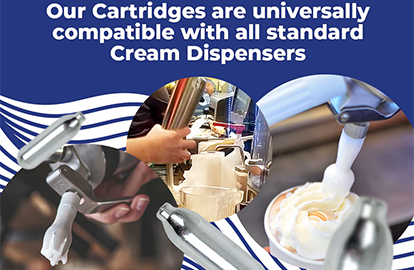Is nitrous oxide legal?
Nitrous oxide, also known as laughing gas, is a colorless and odorless substance with a slightly sweet taste. It has various legitimate uses, but it's also known for its recreational misuse. This duality raises the question: Is nitrous oxide legal? The answer is, it depends. The legality of nitrous oxide varies depending on the context and location: Legal Uses: Medical: Nitrous oxide is a common anesthetic used in dentistry and surgery for its pain-relieving and anxiolytic effects. Food Industry: It's used as a propellant in whipped cream dispensers and as a food additive for its ability to maintain pressure and texture. Automotive: Nitrous oxide can be used to boost engine power in racing cars. Illegal Uses: Recreational Drug: Inhaling nitrous oxide can induce euphoria, laughter, and hallucinations. This recreational use is illegal in many places. Supply for Recreational Use: Selling or distributing nitrous oxide for recreational purposes is illegal in most jurisdictions. Legality by Region: United States: Possession of nitrous oxide for recreational use is illegal in many states. However, specific laws and penalties vary. For example, in California, possession with intent to sell is a felony. United Kingdom: The Psychoactive Substances Act of 2016 made it illegal to supply or import nitrous oxide for human consumption. Australia: Laws regarding nitrous oxide vary between states and territories. Generally, recreational use is prohibited, and supply is restricted. Risks of Illegal Use: Recreational use of nitrous oxide carries several risks, including: Oxygen Deprivation: Inhaling nitrous oxide can displace oxygen in the lungs, leading to hypoxia, which can be fatal. Neurological Damage: Long-term misuse can lead to vitamin B12 deficiency, causing nerve damage and other neurological problems. Frostbite: Direct contact with nitrous oxide can cause severe frostbite due to its extremely cold temperature. Mental Health Issues: Regular use can exacerbate existing mental health conditions and increase the risk of developing anxiety and depression. Conclusion: While nitrous oxide has legitimate uses in various fields, its recreational use is illegal in many places due to the associated health risks. Laws and regulations regarding nitrous oxide vary by location, so it's crucial to be aware of the specific laws in your area.
FAQ
-
Can I recycle N2O and CO2 chargers?
Both the CO2 (seltzer) and N2O (whip cream) chargers are made of steel and can be recycled. We encourage you to your local recycling program with any specific questions regarding their safe disposal.
-
How do I use nitrous oxide (N2O) chargers (whippets)?
Making delicious whip cream with our nitrous oxide chargers and dispensers is extremely easy. Nitrous Oxide gas is used in the preparation of whipped cream recipes and other foam creations like espuma and mousse desserts. Do not use the carbon dioxide (CO2) Soda chargers you find on our site for whipping cream or espuma preparation, the result will be carbonated cream. Essentially, the "stabilizing agents" in the liquid bind with the nitrous oxide to create a foam. These stabilizing agents are the milk fats, gelatins, or some other material. Nitrogen is a naturally occurring gas in the air we breathe, and in fact accounts for approximately 80% of our atmosphere. This gas is responsible for binding to the milk fats when you prepare the whipped cream with a whisk. The whip cream canisters and nitrous oxide chargers we sell make the process much easier and more predictable. Each charger contains 8 grams of pure nitrous oxide which is adequate for up to 1 pint of liquid whipping cream. Detailed instructions about the use of nitrous oxide whip cream chargers (whippets) whipped cream dispensers (whippers) are included with every order.
-
My cream whipper is not producing fluffy cream?
Wenn dein Sahneschlepper nicht die gewünschte Konsistenz der Sahne produziert, kann es daran liegen, dass du die Sahneschlepper überfüllst oder sie nicht genug schüttelst, bevor du sie abgibst. Achten Sie darauf, die Anweisungen des Herstellers für die richtige Menge Creme zu verwenden und die richtige Schütteltechnik zu befolgen. Wenn das Problem weiterhin besteht, versuchen Sie, eine andere Creme zu verwenden oder die Menge des verwendeten N2O-Gases anzupassen.
-
Can I use any brand of N2O cartridges with my cream whipper?
It is recommended to use only high-quality N2O cartridges that are specifically designed for cream whippers. Using low-quality or off-brand cartridges can affect the performance of your whipper and may even damage it. Always check the manufacturer's recommendations for compatible cartridges.
-
How do I clean my N2O cream whipper?
To clean your cream whipper, first remove any remaining cream or liquid from the dispenser. Then, disassemble the whipper and wash each part with warm, soapy water. Be sure to thoroughly rinse and dry each part before reassembling the whipper. Avoid using abrasive cleaners or harsh chemicals, as these can damage the whipper.
-
My cream whipper is leaking gas. What should I do?
If you notice gas leaking from your N2O cream whipper, first check to make sure that the cartridge is properly inserted and tightened. If the leak continues, it may be a sign that the seal in the whipper is damaged. In this case, you may need to replace the seal to prevent further leaks.
-
Why is my N2O cream whipper not dispensing properly?
This could be due to a few reasons. First, make sure that the N2O cartridge is properly inserted and tightened. If it is, then the issue may be with the whipper itself. Try cleaning the nozzle and dispenser head to ensure there are no blockages. If the problem persists, it may be time to replace the dispenser head.
-
What are the potential environmental impacts of N2O production?
N2O is a potent greenhouse gas that contributes to global warming and ozone depletion. Its production can also lead to the release of nitrogen oxides, which can contribute to air pollution and acid rain.





